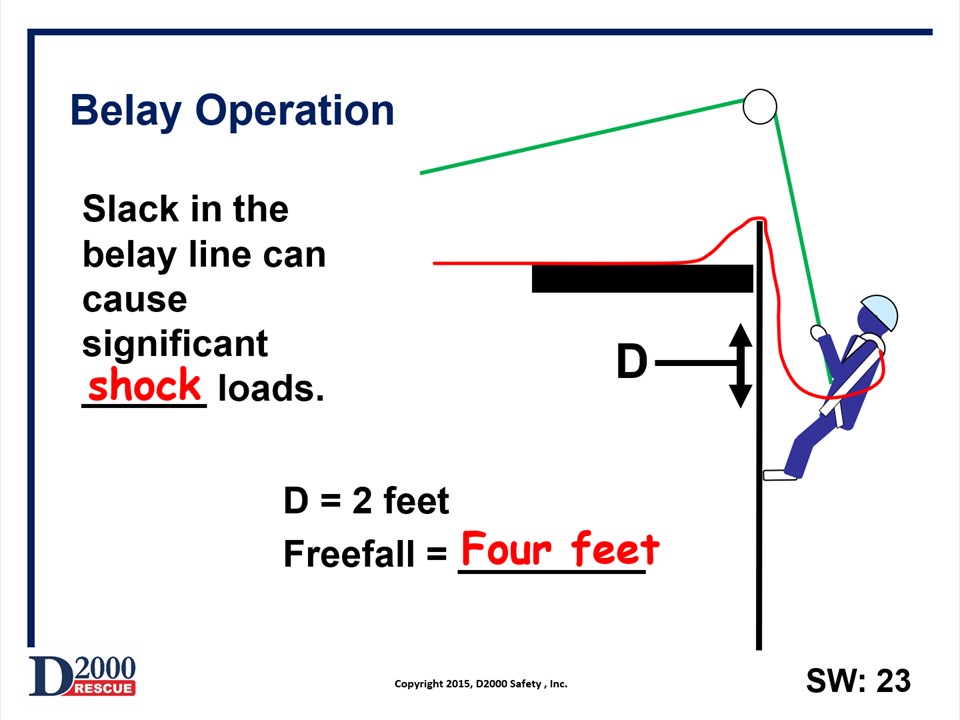Using a belay (secondary) line for fall protection works well if done properly. One of the challenges of using these systems is ensuring that the belay line mirrors the movements of the rescuer or patient.
If the belay line is too tight, it hinders the movement of the patient/rescuer. If there is too much slack, you are introducing the possibility of a serious shock load in the event of mainline failure. These are the types of issues we address in our Confined Space Rescue Team Leader training.

How much shock load can be created? It depends on:
- The amount of slack in the belay line (the free fall distance).
- The weight of the rescuer, and
- The deceleration distance which begins when the belay line tightens up at the end of the free fall.
In general, we can estimate the arresting force using this simple equation.
Arresting Force = Weight X Freefall Distance / Stopping Distance
So if you had a 200-pound rescuer who fell four feet and stopped within a foot, you expect a force on the belay line of about 800 pounds. If they stopped within a half-foot, they might generate 1,600 pounds.
It is fairly simple to determine the rescuer weight and estimate the amount of free fall due to a slack in the belay line, but knowing the exact stopping distance can be a bit more challenging. We usually estimate about a half foot of stopping distance due to the harness stretch (assuming a well-adjusted harness) and the body distortion due to the application of the arresting force.
But then we need to consider stretch in the rope. Assuming we are using 1/2-inch (static) rope, we might see a 3% stretch in the rope. If the rescuer fell on a 50-foot rope, this might add eighteen inches of stretch which will reduce the shock load on the rope, anchor and rescuer.
If the rescuer's fall was arrested by a belay line that was only extended 10-feet, the force on the rescuer will be closer to 1,600 pounds (1,800 pounds is the OSHA limit).
So taking a fall on a longer belay will definitely be more comfortable, but additional stretch may result in the rescuer striking lower levels (never a good idea).